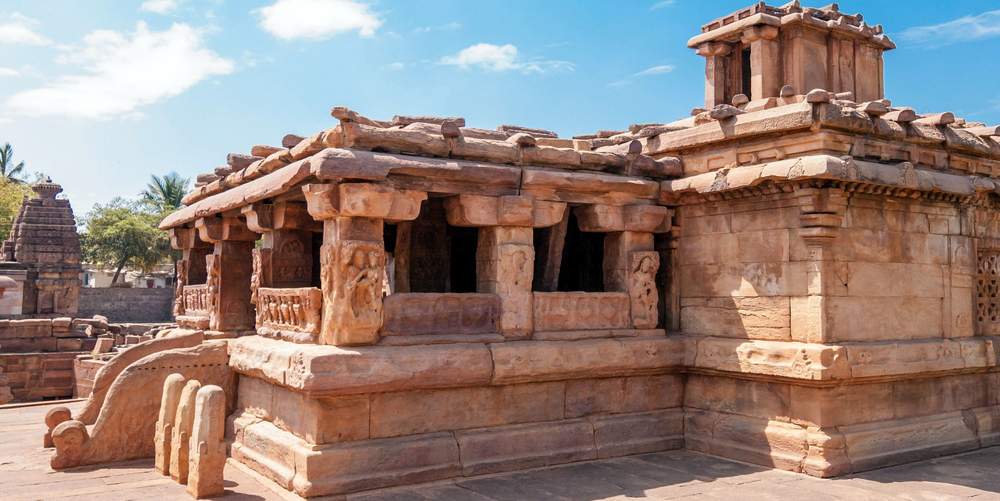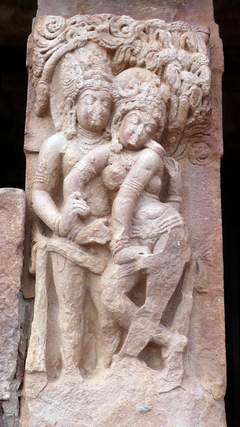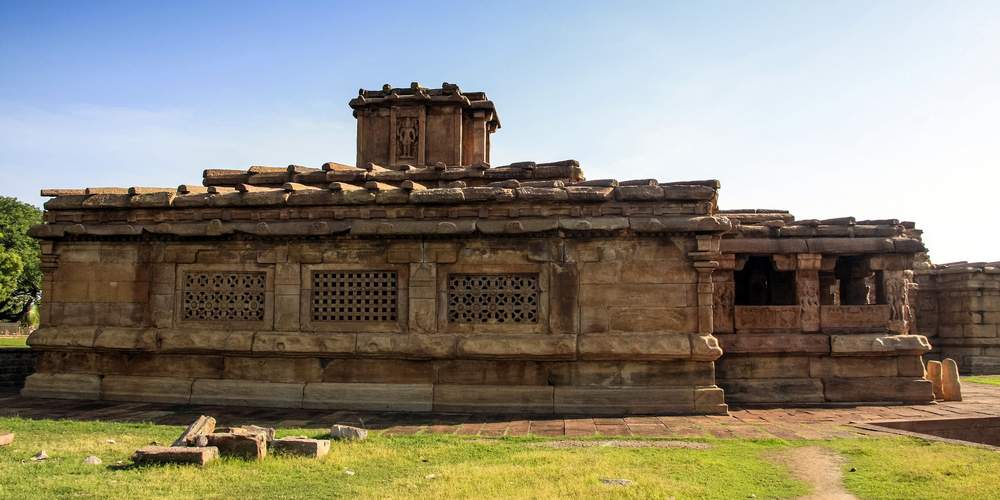
Ladkhan temple is a significant temple at Aihole because of the method of its construction which marks an important stage in the evolution of the Chalukyan style of architecture.
The temple is called Ladkhan Temple because a gentleman named Ladkhan lived in the temple and consequently the local populace began to call it so. If truth be told, early India scholars like Percy Brown and others considered this temple to be the earliest in Aihole and assigned a date 450 CE. On the contrary, modern researches have revealed that it is not that early and scholars designate it to seventh century CE.
 It has a distinctive plan and does not give the mark of a temple at all in the first instance. In reality, it looks like a mandapa with rows of pillars. The temple consists of a small garbhagriha attached to the rear wall of a square sabhamandapa and a rectangular mukhamandapa/em>. Hence, there is no pradakshinapatha. The interior of the sabhamandapa is divided into two parallel enclosures with the help of a row of pillars.
It has a distinctive plan and does not give the mark of a temple at all in the first instance. In reality, it looks like a mandapa with rows of pillars. The temple consists of a small garbhagriha attached to the rear wall of a square sabhamandapa and a rectangular mukhamandapa/em>. Hence, there is no pradakshinapatha. The interior of the sabhamandapa is divided into two parallel enclosures with the help of a row of pillars.
The garbhagriha has a Sivalinga and therefore it might have been a Siva temple initially. The rectangular mandapa in the front is smaller in size and provides an entrance. As there is a good image of Surya, some scholars consider it as a temple devoted to Sun. The garbhagriha entryway has Garuda in human form on the doorjamb.
The temple stands on a cellar with moldings and the uppermost molding is very thick, over which rises the wall of the temple. A similar molding is found at the roof level. But what is more interesting is the roof itself. The posterior portion has a square in two tiers with a slight slope in all the four directions. On them are placed stone rafters in reproduction of wooden roof of the earlier buildings. Similar is the roof of the front mandapa, which is rectangular. On the roof of the sabhamandapa is an upper garbhagriha opening to the east with pillars and pilasters without any sikhara. These architectural features have made this temple unique.

There are a large number of sculptures on the pillars and the koshthas. Numerous sculptures of amorous couples and the jalandhras are very eye-catching. The roof of the mandapa has a naga holding a lotus. The upper garbhagriha wall has niches in which are found sculptures of Vishnu, Surya, and Siva. Bearing in mind all the architectural features the Ladkhan temple is considered to represent an important stage in the development of early Chalukyan art.
How often do you travel to India? You have written a lot about Karnataka; this feels good. As I am from Hampi and I study architecture these things interest me. Thank you for these blogs!!!
Wrong narrative
Fact – Ladkhan destroyed the temple & used it as his residence.
temple named after the person who defiled it:
In 16th century, a Bijapuri general named Lad Khan attacked the temple. He threw out of temple the Hindu Murtis and other objects of worship. He made the temple his personal place of residence and used Garba Griha as a toilet. The temple was thus destroyed and defiled.
In 20th century, ASI restored the defiled temple. It brought the shiva linga lying on the stairs and reestablished it. It restored the pillars and columns that have been damaged.